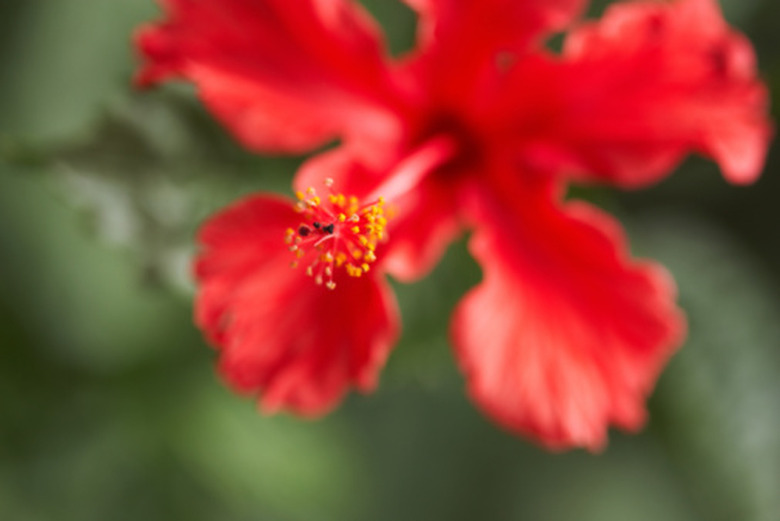Why Did My Hibiscus Suddenly Lose All Its Leaves?
A plant believed to have originated in China, the hibiscus includes a large number of species that primarily enjoy tropical locales. That has not stopped those living in cold climates from introducing the plant to their gardens. When the hibiscus must be moved inside for winter protection, culture shock occurs.
Winter Change
The hibiscus thrives exclusively outdoors in tropical or subtropical locations, so those located in colder regions require protection from the wintry elements. A hibiscus losing all its leaves is a common occurrence as the plant is brought inside for the winter and receives less sunlight. According to the University of Illinois Extension, leaf loss is practically unavoidable when the hibiscus is sheltered for the winter.
Sunlight
The dropping of leaves is unavoidable because this tropical plant craves sunlight — a situation unlikely to be resolved in most chilly locales. The hibiscus should be situated to receive as much direct sunlight as possible and even the utilization of supplemental lighting is advisable. Fertilizing and pruning the plant during the winter will spark some growth, and the plant will regenerate its leaves upon the return of spring and a gradual reintroduction to an outdoor setting.
- A plant believed to have originated in China, the hibiscus includes a large number of species that primarily enjoy tropical locales.
- A hibiscus losing all its leaves is a common occurrence as the plant is brought inside for the winter and receives less sunlight.
Stress
The yellowing and dropping of leaves on a hibiscus may also be an indication that the plant is facing an excessive amount of stress. This typically comes in the form of overwatering and overfertilization. The hibiscus requires a significant amount of hydration, but it does not enjoy sitting in water. This is especially true in winter as the biological processes of the entire plant slow down and it requires less sustenance.
Disease and Pests
Overwatering brings on root rot, a condition that stresses the plant, causes it to lose leaves and, in extreme cases, may be fatal. One way to determine whether the hibiscus is thirsty is to examine the leaves. When well-hydrated, hibiscus leaves exhibit a shine and glow. If they appear dull, the hibiscus requires water. Pests like the greenhouse whitefly may also make the journey inside with the plant and continue their infestation, sucking on the leaves of the hibiscus and damaging them to the point that they fall.
- The yellowing and dropping of leaves on a hibiscus may also be an indication that the plant is facing an excessive amount of stress.
- Overwatering brings on root rot, a condition that stresses the plant, causes it to lose leaves and, in extreme cases, may be fatal.
